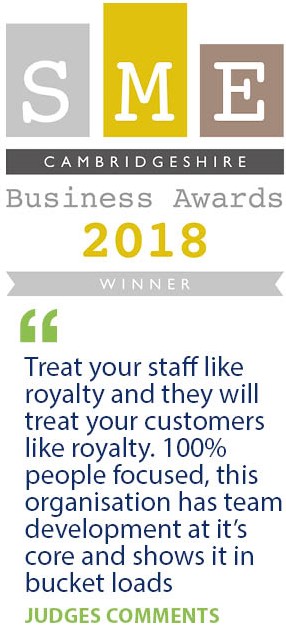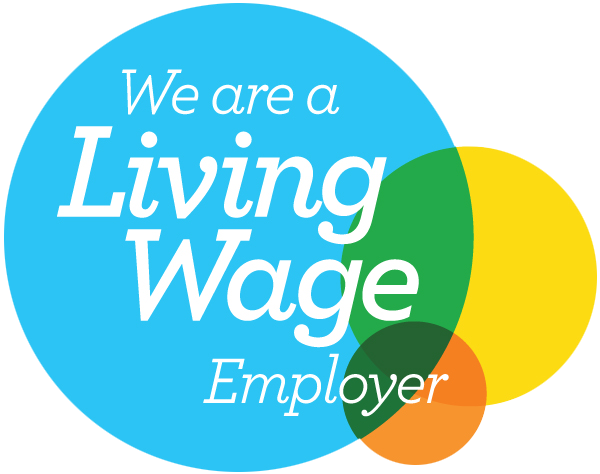
Emerging from recent conversations are six core areas of shared concern in the wake of Covid-19 and Brexit, as businesses have had an unprecedented year of challenges to their operations.
Paydata’s HR Workshops bring together HR professionals in the following sectors:
Here we outline six common issues that emerged in our recent virtual HR Group calls, highlighting shared challenges across these industries.
Employers have had to tackle profound change since March of this year. Since the last global recession of 2008, we have observed cautious levels of pay increases, which have stayed around two per cent. For 2020, in some sectors, pay awards were largely already agreed and being implemented before Covid-19 hit. Where they have not proceeded as planned, pay freezes are prevalent. In spring 2020, pay freezes were already in operation for 12 per cent of respondents to our UK Reward Management Survey. Constrained pay is a common feature across all sectors, which is also attributable to the uncertainty around the impact of Brexit and the long-term effect that the pandemic will have on the economy, given that inflation has fallen further to 1.1 per cent over 2020 and the UK GDP was 20 per cent lower in Q2 of 2020 in contrast to 2019 Q4. Financial situations vary greatly, but the furlough scheme undoubtedly saved numerous roles at the height of lockdown.
Many employers are taking the opportunity to holistically evaluate their reward strategy in light of ongoing restructurings and redundancies. Job families and descriptions are being reviewed to ensure roles are clearly organised, streamlining the business. With many managing a remote workforce, some are questioning whether London Weighting Allowances still need to be offered, as a number of employees are not commuting to the office. Conversations around this must be carefully handled, as the situation has not been chosen by many employees. Pay framework reviews are increasingly common as organisations must ensure they are retaining important talent in spite of constrained pay by ensuring pay is still set at a competitive market level. Greater market pressures exist for certain roles, particularly clinical roles and chemical engineers. Some have put in an interim review in October to ensure they retain key people by targeting critical pay increases.
The National Living Wage is also affecting pay reviews; this has had an effect on lower-paid workers and created upward pressure on supervisor pay to ensure that there is enough differentiation for the role’s level of responsibility. The same has happened for key roles in the NHS that have been moved up in the bands, meaning job descriptions are being carefully reviewed by employers to ensure pay progression is intact. There is the additional political dimension involved in pay increases in the Healthcare sector – it will be difficult for the government to pay a low increase to the NHS in light of the role it continues to play in the pandemic and given the three year pay deal comes to an end this year. Similarly, private healthcare companies are reporting increased pressure on their pay levels from the pandemic, as working closely with NHS staff has led to comparisons and they are looking to benchmark themselves against key NHS roles. Pay forecasts for 2021 are particularly challenging given the uncertainty of so many external factors.
Recruitment and retention challenges are the lowest reported since the 2008 recession, with one in five employers expecting retention difficulties and fewer than one in three anticipating challenges in recruiting people over the next 12 months. In contrast to the levels reported last year, HR teams are taking the opportunity to review whether they have in place the right skillsets within their organisations going forward and targeting pay to retain top talent. There are exceptions such as Healthcare which is more insulated from market pressures, reporting a buoyant labour market with people keen to move. However, Healthcare in particular have pointed to concerns over the impact on the labour pool in the wake of Brexit. Brexit may pose a risk to the number of candidates for lower-paid/frontline roles. Some organisations are anticipating that they will have to target these individuals in their next pay review and are preparing their workforce now.
Equally, some sectors are reporting more movement on investment decisions. Employers in the Property and Construction Consulting sector are reporting more business activity and client wins that will lead to more recruitment. Organisations are also considering how best to develop more apprenticeship and graduate schemes to support early careers, whilst carefully managing pay budgets. Director sign-off on any recruitment is quite a common requirement, especially in organisations where pay freezes are in operation. Overall, people are prioritising job security over moving companies at the moment, whilst some employers have tried to redeploy some staff into other roles in order to retain key talent, particularly in the Facilities Management sector.
Given the shocks and disturbances of 2020, employers are addressing concerns over employee wellbeing by increasingly reviewing how they can strengthen their people and culture strategy. Wellbeing strategies are geared towards supporting employees in overcoming mental and financial health risks posed by the pandemic. Initiatives designed to inform financial health are common, alongside those designed to overcome the impact of isolation and sleep deprivation (e.g. links to charities, access to the HeadSpace App and the Employee Assistance Programme). Events to boost morale and retain the culture have also been common, with some even running Murder Mystery online events and ensuring employees keep in touch virtually.
Total Reward Statements have been provided by some to overcome low levels of pay. This provides employers with the opportunity to outline non-financial benefits that are of value to employees. Days off and one-off bonuses to boost employee morale could also be captured in these statements to show the investment being made by businesses at an uncertain time. Benefit reviews focusing on wellbeing are increasingly popular, with the Cycle to Work schemes being popular and excitement in the Water and Electricity industry at the prospect of electric company car schemes being introduced.
A number of organisations have run pulse surveys, tracking morale and engagement. For some sectors, they have received their best-ever results. Across all sectors, there were reports of employers being more accommodating of employee challenges, for instance balancing home life around work and focusing on employee mental health, combined with a strong communications strategy directly from leadership maintaining morale. Employers are also alert to the fact that in March, the weather was much nicer and we are now entering winter which may erode employee morale as restrictions continue and fatigue sets in. Top-led communication is seen as a key tool for ensuring that employees feel supported, echoing the emphasis placed on maintaining excellent levels of communication and support in March. The frequency of senior management communications must be sustained to drive engagement across all sectors.
Some organisations are confident in the future where demand has sustained profits, such as essential services amidst the pandemic including food retail, whilst many state that the outlook remains uncertain. For others, certain parts of the business have performed very differently, for example picking up construction work on the NHS Nightingale Hospitals whilst other business units have struggled. Similarly, this was reported by Associations and Institutes in relation to the various arms of their businesses, however a number underwent a ‘digital transformation’ to modernise their services that has increased income. This demonstrates the importance of being able to respond and innovate.
Others are relatively stable in terms of their business outlook as they are more protected from consumer behaviour – for instance, the electricity and water sectors are relatively stable given the nature of their services. Some organisations report that they have in fact benefitted from lower petrol prices and staff being able to work from home, but they are alive to the economic challenges customers face in paying their bills. In contrast, Care organisations are concerned over the average patient occupancy and the slowing of new patient admissions, which pose a real risk to revenue streams next year. They are therefore currently investigating other sources of income, forced to diversify like many businesses during this time.
Many cited the reduction of headcount as one way they could protect the business and reduce costs. Restructurings are being pursued as part of a wider business improvement project for some companies. In the PACC sector, business strategies are being reviewed until 2023 to identify what resources they require as they move to an agile system. Scenario planning now may save jobs down the line and it helps with managing expectations for everyone involved.
The return to the office encouraged by the government in the summer is now on hold. Where people are physically required at work, one way systems and rotas are in operation to manage capacity. For those who have reinvented their operations since March, such as private healthcare providers who took on NHS contracts, the challenges behind these decisions are still ongoing. The pandemic that many hoped would be over by now is still very much impacting daily life, but many organisations are planning for what a return to normal (or as close as possible) will look like.
In addition to operations, the way in which we work is unrecognisable, with lockdown in March being billed as the most widespread experiment in the history of working from home. Whilst many voiced concerns over productivity, some organisations have seen these levels increase. A number of Professional Associations and Institutes reported that they are moving to smaller offices as they require less office space and will provide a balance between home and office working going forward. Some are grouping employees into three categories:
Many have acknowledged that some employees have an urgent need to return to the office given their psychological attachment. Greater flexibility is nonetheless expected from many employees given that productivity has in fact gone up in some cases. With the appropriate safety measures in place, it is business as usual at the office for many of the frontline sector staff in Construction, Facilities Management, Water and Electricity.
The spotlight on the Black Lives Matter movement built on the preceding Me Too movement, underlining the importance of diversity and inclusion. Organisations must actively promote a culture of inclusion and key stakeholders can increasingly hold them accountable to their track record. Investors, prospective candidates and current employees will be looking at reporting requirements as key metrics and evidence of this approach. A number of organisations are looking at diversity in detail, in terms of the barriers to opportunity, not just equal pay. Despite the government removing the requirement to publish gender pay data, many companies still published their calculated figures. On the Facilities Management call, discussion focused on how to treat furloughed staff in next year’s gender pay gap figures. One organisation said they would calculate their figures with furloughed employees included and excluded, to help with their narrative text.
The ethnicity pay gap reporting is on employers’ radars, but the government has not made further announcements regarding when this reporting requirement will come into force. The CEO Pay Ratio is another key metric that speaks to an inclusive culture, as the accompanying explanation around the ratio must justify the scale of the disparity. This objectively reinforces whether the company is committed to fair and ethical pay practices. Many employers spoke about a desire to achieve Investors in People accreditation to ensure fair pay is upheld, with Water companies discussing how this is becoming a Board-level issue.
Take ten minutes to contribute your views about pressing agenda items for HR teams and receive a free report of the findings in full. Subject to participation levels in your sector, we will also produce tailored reports specific to your industry.

Managing Director
Tim is a passionate HR specialist with over 20 years’ experience in pay and reward. As a director of Paydata, Tim has worked with thousands of satis...
21 October 2020
Inflation 0.5% September 2020 Employment 32.6M do...
12 October 2020
Brexit hasn’t gone away as a key agenda item for businesses – the UK left the EU in January and ...
6 October 2020
As lockdown restrictions are operating in varying degrees across the country, we outline the emergin...
Sign up for briefings on pay benchmarking, salary surveys, reward strategy and statistical updates.
sign up for updates
© Paydata Ltd 2025 All rights reserved.
Registered in England no: 3632206
VAT no: 728 0808 28
Paydata Ltd, 24 Commerce Road, Lynch Wood, Peterborough, Cambridgeshire, PE2 6LR

